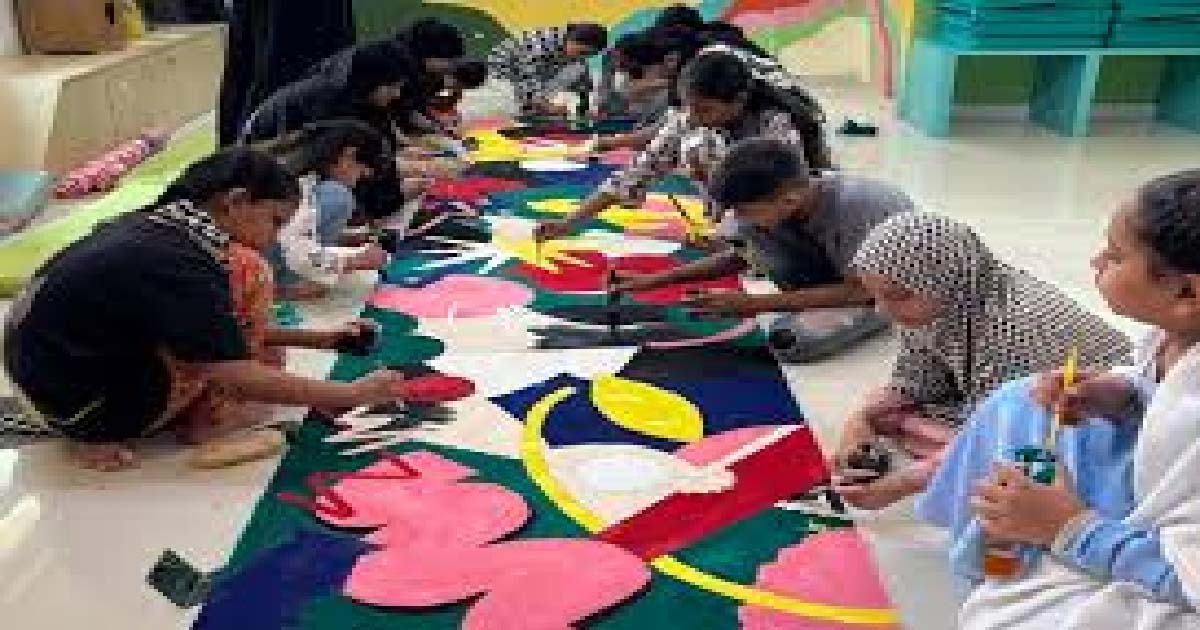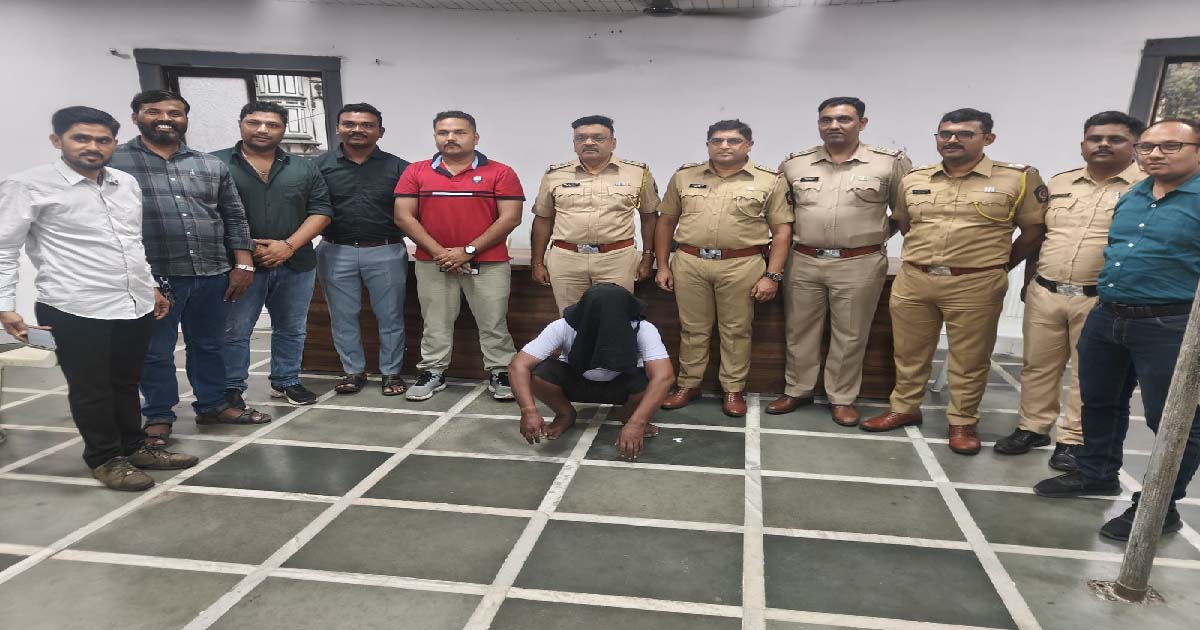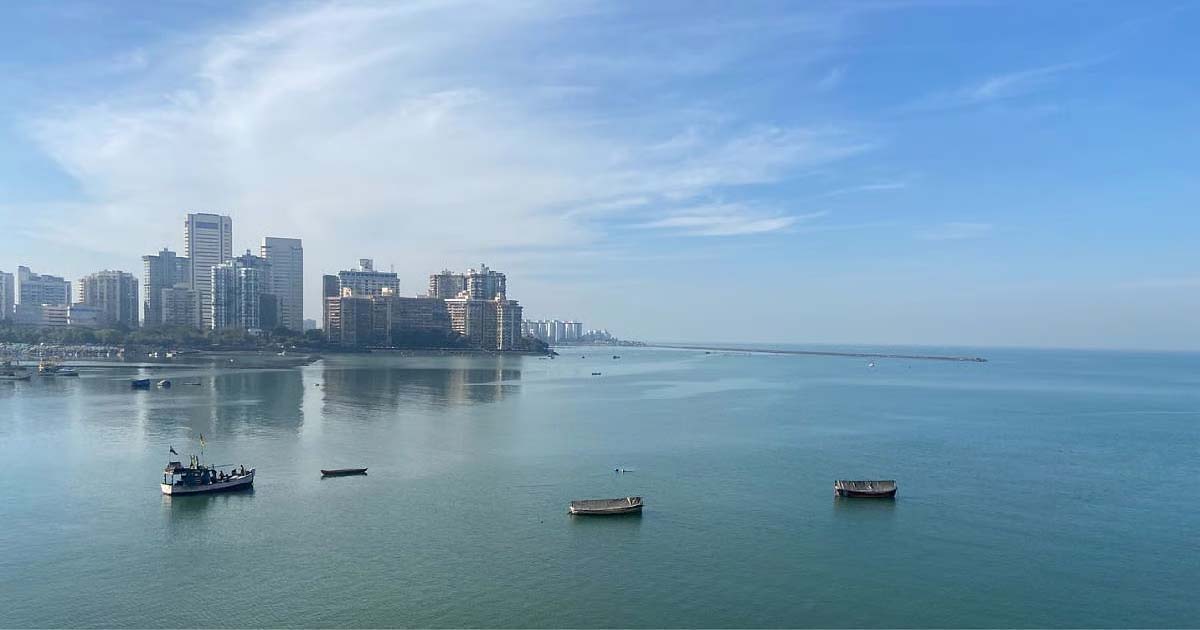Maharashtra
MCOCA accused wanted in raid on Navi Mumbai police station in Palghar arrested

Mumbai: The Mumbai Crime Branch has claimed to have arrested a criminal gangster and MCOCA accused Shiva Armagan Shetty, who was wanted after bail. Several serious crimes including MCOCA, theft, robbery, attempt to murder are registered against him. Kanjurmarg police was looking for him, after which Unit 7 of Mumbai Crime Branch searched for him at the accused’s residential address, but he was missing from home. The accused has carried out secret raids in Navi Mumbai and Thane area. The Unit 7 team received information that the accused is staying on rent in the Kalwa area of the police station, on which the Crime Branch took him into custody from the police station. The Crime Branch said that during the investigation, the accused said that after being released on bail, he had committed raids in Navi Mumbai police station, Mira Road, Palghar and other areas. The accused was later handed over to the Navi Mumbai Kharghar police station. This operation was carried out by DCP Vishal Thakur under the leadership of Mumbai Police Commissioner Deven Bharti and the police arrested the wanted accused and solved 11 criminal cases. It has also been claimed to have done.
Maharashtra
Govandi is changing: Successful Talent of Govandi Festival filled with children’s artistic talents

Govandi: With the aim of changing the negative image of Govandi, notorious for drug addiction and crime, and providing a bright future for the children here, the Abu Asim Azmi Foundation, led by local MLA Abu Asim Azmi, has taken a big step. The foundation recently successfully organized the “Talent of Govandi Festival”, which was going on for the past one month.
The festival organized various competitions related to education, sports, skills and talents. Thousands of children from Govandi, Mankhurd, and Shivaji Nagar enthusiastically participated in more than 17 competitions, including singing, dancing, drawing, speech, mehndi, recitation, naat, handicrafts, rangoli, carom, boxing, cricket, volleyball, badminton, karate and poetry. The children performed brilliantly by showcasing their talents and hard work. The new and hidden talents of Govandi were introduced not only locally but also internationally. On this occasion, those IAS officers who added to the glory of Govandi were also honored. MLA Abu Asim Azmi, motivational speakers Sir Awadh Ojha and Sana Khan, and social media influencer Faizo among other dignitaries were present at the event. All of them encouraged the children and gave them prizes. The main objective of the festival was to encourage children to stay away from drugs and choose a better life and make their future bright, through which the talents of the children of Govindi were introduced to the whole world.
Maharashtra
Accused wanted in Madhya Pradesh murder arrested after 7 years from Dhoni

Mumbai: Paidhoni Police Station has traced the accused who was absconding for 7 years in a murder case in Madhya Pradesh and handed him over to the Madhya Pradesh Police. 6 November
From Katni district of Madhya Pradesh, Police Sub-Inspector Rishabh Singh Baghel, Dilip Kaul of Barhi Police Station informed Paidhoni Police that a case has been registered under sections 302, 294, 323, 324, 506, 147, 148 of the Indian Penal Code at Barhi Police Station, Katni district, Madhya Pradesh. The accused in this case is wanted for the last 7 years and is still hiding in the limits of Paidhoni Police Station in Mumbai, help has been sought from the police to trace him. This was informed to Hon. After which the higher officers were informed about this and the above wanted accused was searched and he was detained from the footpath near Balgi Hotel, P.D. Melo Road, Masjid Bunder East, Mumbai. Later he was brought to the Paidhoni Police Station and interrogated regarding the crime. Since there was evidence of his involvement in the crime, the said accused was handed over to the police team at the above police station, district. Katni and they took him to the Barhi Police Station. Where further investigation is underway. The accused has been identified as Raja Ram Ramadhar Tiwari, 35 years old. With the cooperation of the Mumbai Police, the Madhya Pradesh Police solved the case and the wanted accused has been arrested on charges of murder.
Maharashtra
Mumbai Weather Update: City Wakes Up To Clear Skies, Mild Breeze; Overall AQI Stays In Moderate Range At 78

wether
Mumbai: After weeks of unsettled weather and intermittent showers, the city finally woke up to clear skies and crisp air on Thursday, marking what appears to be the end of the monsoon season. For the past two days, no rainfall was recorded across Mumbai, signalling that the retreating monsoon clouds have made way for the onset of post-monsoon conditions.
According to the India Meteorological Department (IMD), the city is expected to experience clear skies through the day, with only a minimal chance of isolated light showers or thunderstorms in select pockets. Daytime temperatures are likely to hover around 33°C, while the minimum will settle near 23°C, conditions described as pleasant and comfortable for early November.
The recent spell of short but intense showers had not only brought temporary relief from humidity but also helped wash out accumulated pollutants, leading to an overall improvement in air quality. Prior to this, the withdrawal of monsoon winds had caused a spike in pollution levels due to stagnant air and increased vehicular emissions, resulting in a hazy skyline and reduced visibility.
Fresh data released by AQI.in on Thursday morning reflected this improvement. Mumbai’s overall Air Quality Index (AQI) stood at 78, placing it in the moderate category. While the figure marks a slight dip from the good air quality recorded earlier in the week, it still represents a substantial improvement compared to the smog-filled conditions observed after monsoon withdrawal.
Residents across various parts of the city reported clearer skylines and visibly better air. Among the city’s monitoring stations, Wadala Truck Terminal recorded the highest AQI reading at 92, followed by Parel-Bhoiwada (90) and Mulund West (88). Santacruz East and Bhandup West both registered an AQI of 87, keeping them within the moderate range.
Cleaner air was observed in several western suburbs, where Kandivali East recorded an AQI of 45, falling in the good category. Malad West (59), Powai (62), Jogeshwari (65), and Borivali East (67) were all categorised as moderate, suggesting a consistent improvement across the city’s landscape.
As per AQI.in’s classification, an index between 0–50 is considered “Good,” 51–100 “Moderate,” 101–150 “Poor,” 151–200 “Unhealthy,” and anything above 200 is deemed “Severe” or “Hazardous.”
-

 Crime3 years ago
Crime3 years agoClass 10 student jumps to death in Jaipur
-

 Maharashtra1 year ago
Maharashtra1 year agoMumbai Local Train Update: Central Railway’s New Timetable Comes Into Effect; Check Full List Of Revised Timings & Stations
-

 Maharashtra1 year ago
Maharashtra1 year agoMumbai To Go Toll-Free Tonight! Maharashtra Govt Announces Complete Toll Waiver For Light Motor Vehicles At All 5 Entry Points Of City
-

 Maharashtra1 year ago
Maharashtra1 year agoFalse photo of Imtiaz Jaleel’s rally, exposing the fooling conspiracy
-

 National News1 year ago
National News1 year agoMinistry of Railways rolls out Special Drive 4.0 with focus on digitisation, cleanliness, inclusiveness and grievance redressal
-

 Maharashtra12 months ago
Maharashtra12 months agoMaharashtra Elections 2024: Mumbai Metro & BEST Services Extended Till Midnight On Voting Day
-

 National News1 year ago
National News1 year agoJ&K: 4 Jawans Killed, 28 Injured After Bus Carrying BSF Personnel For Poll Duty Falls Into Gorge In Budgam; Terrifying Visuals Surface
-

 Crime1 year ago
Crime1 year agoBaba Siddique Murder: Mumbai Police Unable To Get Lawrence Bishnoi Custody Due To Home Ministry Order, Says Report












